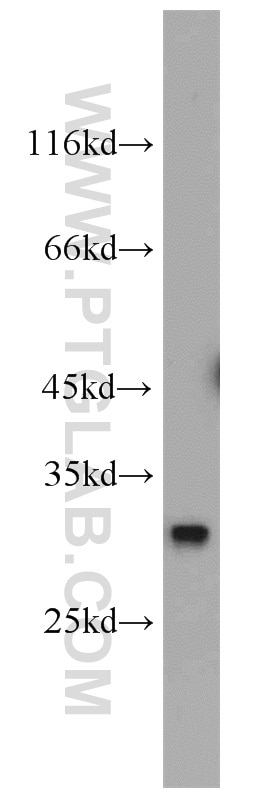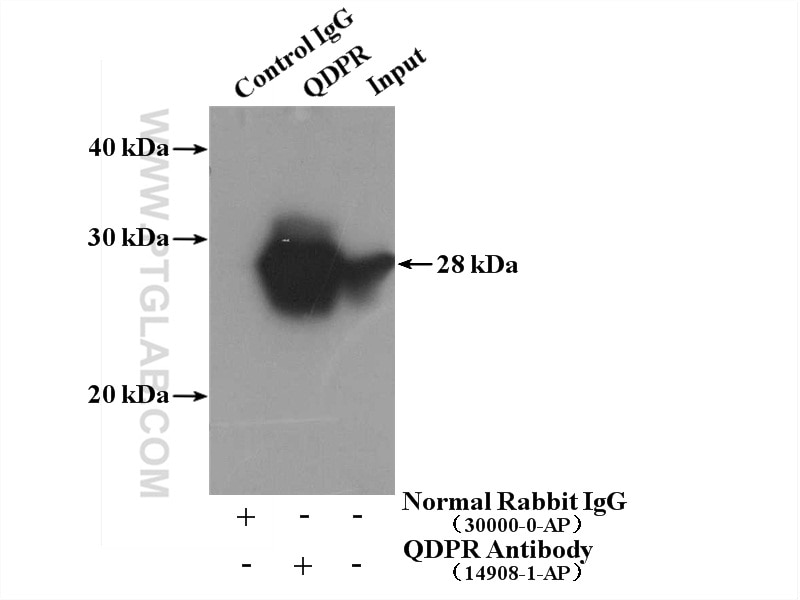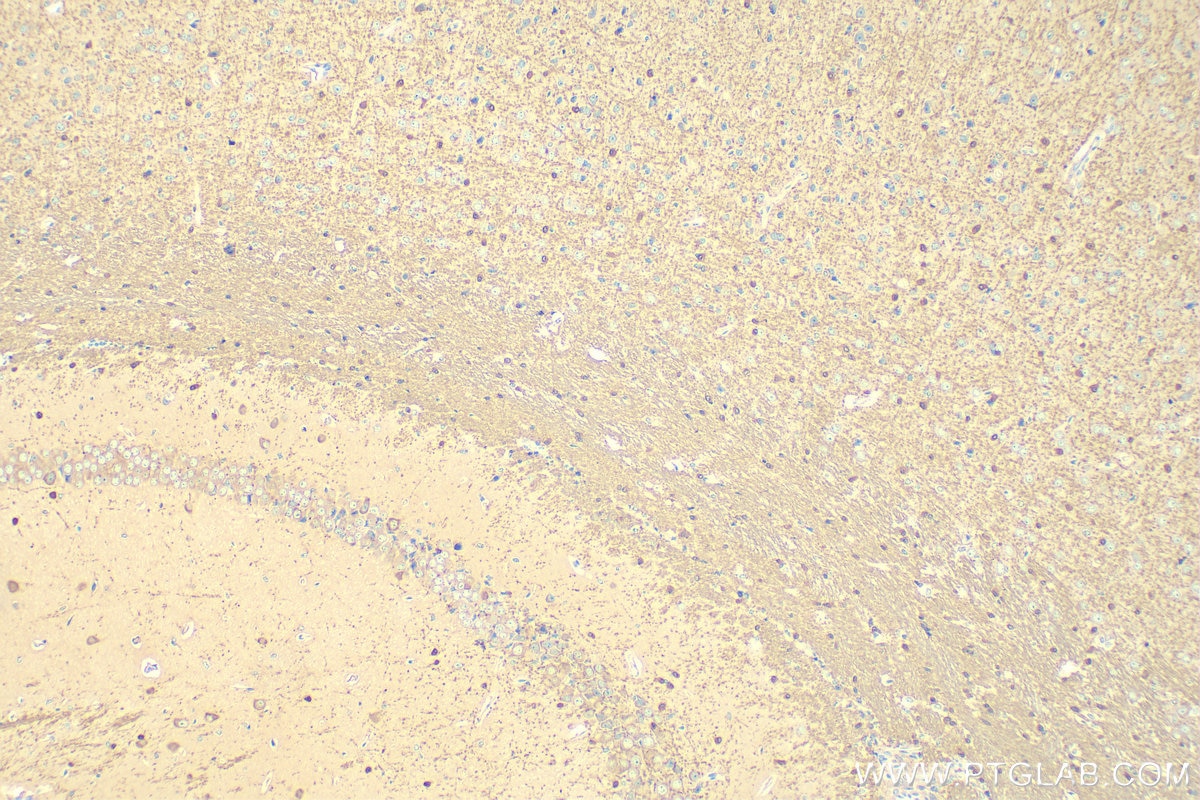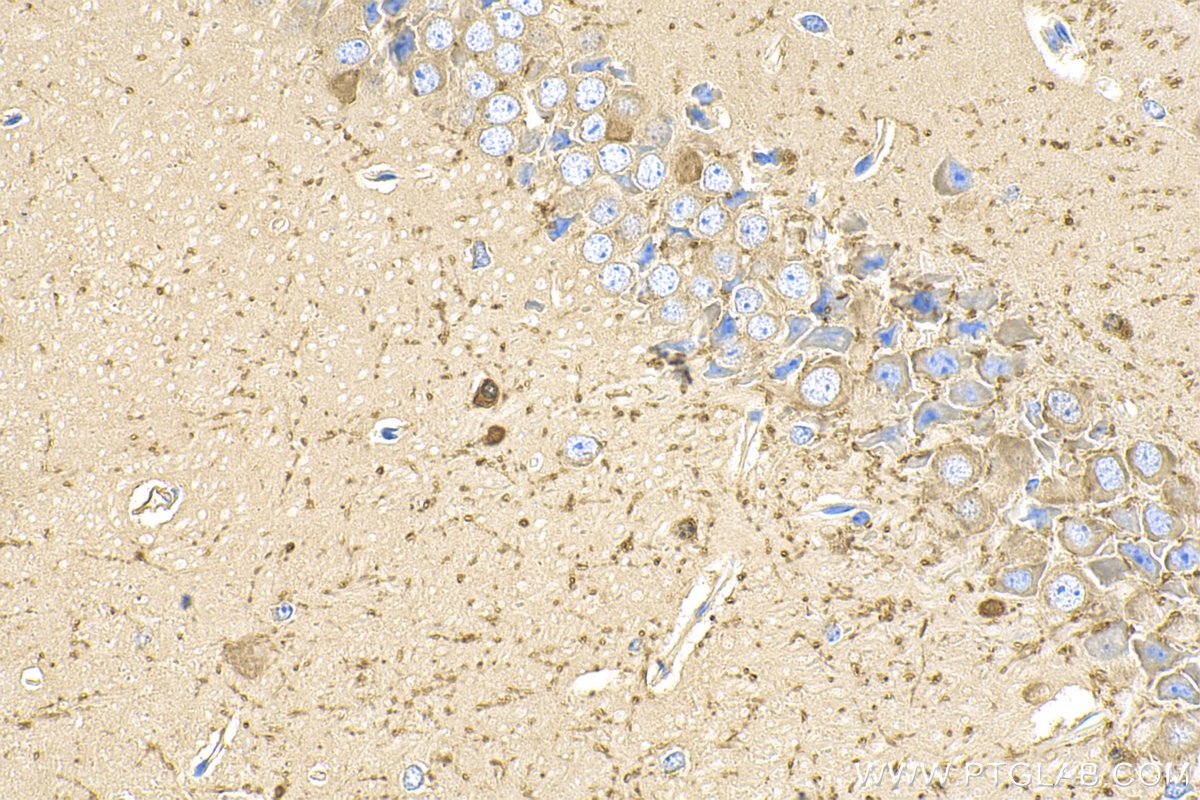Anticorps Polyclonal de lapin anti-QDPR
QDPR Polyclonal Antibody for WB, IP, IHC, ELISA
Hôte / Isotype
Lapin / IgG
Réactivité testée
Humain, rat, souris
Applications
WB, IHC, IF, IP, ELISA
Conjugaison
Non conjugué
N° de cat : 14908-1-AP
Synonymes
Galerie de données de validation
Applications testées
| Résultats positifs en WB | tissu hépatique de souris, tissu hépatique humain |
| Résultats positifs en IP | tissu hépatique de souris |
| Résultats positifs en IHC | tissu cérébral de souris, il est suggéré de démasquer l'antigène avec un tampon de TE buffer pH 9.0; (*) À défaut, 'le démasquage de l'antigène peut être 'effectué avec un tampon citrate pH 6,0. |
Dilution recommandée
| Application | Dilution |
|---|---|
| Western Blot (WB) | WB : 1:500-1:2000 |
| Immunoprécipitation (IP) | IP : 0.5-4.0 ug for 1.0-3.0 mg of total protein lysate |
| Immunohistochimie (IHC) | IHC : 1:50-1:500 |
| It is recommended that this reagent should be titrated in each testing system to obtain optimal results. | |
| Sample-dependent, check data in validation data gallery | |
Applications publiées
| WB | See 5 publications below |
| IF | See 1 publications below |
Informations sur le produit
14908-1-AP cible QDPR dans les applications de WB, IHC, IF, IP, ELISA et montre une réactivité avec des échantillons Humain, rat, souris
| Réactivité | Humain, rat, souris |
| Réactivité citée | Humain, souris |
| Hôte / Isotype | Lapin / IgG |
| Clonalité | Polyclonal |
| Type | Anticorps |
| Immunogène | QDPR Protéine recombinante Ag6705 |
| Nom complet | quinoid dihydropteridine reductase |
| Masse moléculaire calculée | 26 kDa |
| Poids moléculaire observé | 28-30 kDa |
| Numéro d’acquisition GenBank | BC000576 |
| Symbole du gène | QDPR |
| Identification du gène (NCBI) | 5860 |
| Conjugaison | Non conjugué |
| Forme | Liquide |
| Méthode de purification | Purification par affinité contre l'antigène |
| Tampon de stockage | PBS with 0.02% sodium azide and 50% glycerol |
| Conditions de stockage | Stocker à -20°C. Stable pendant un an après l'expédition. L'aliquotage n'est pas nécessaire pour le stockage à -20oC Les 20ul contiennent 0,1% de BSA. |
Informations générales
Dihydropteridine reductase (QDPR), also named as DHPR and HDHPR, is an essential enzyme in the hydroxylating system of the aromatic amino acids, since it catalyses the regeneration of tetrahydrobiopterin (BH4), the natural cofactor of phenylalanine, tyrosine, and tryptophan hydroxylases, from the quininoid-dihydrobiopterin produced in these coupled reactions(PMID:8326489). The QDPR protein is active as a dimer, with a subunit Mr of 26 kDa(PMID:7627180). This protein belongs to the short-chain dehydrogenases/reductases (SDR) family. Defects in QDPR are the cause of BH4-deficient hyperphenylalaninemia type C (HPABH4C)(PMID:11153907).
Protocole
| Product Specific Protocols | |
|---|---|
| WB protocol for QDPR antibody 14908-1-AP | Download protocol |
| IHC protocol for QDPR antibody 14908-1-AP | Download protocol |
| IP protocol for QDPR antibody 14908-1-AP | Download protocol |
| Standard Protocols | |
|---|---|
| Click here to view our Standard Protocols |
Publications
| Species | Application | Title |
|---|---|---|
Glia Developmental maturation and regional heterogeneity but no sexual dimorphism of the murine CNS myelin proteome | ||
Mol Autism RNA sequencing and proteomics approaches reveal novel deficits in the cortex of Mecp2-deficient mice, a model for Rett syndrome. | ||
Front Mol Neurosci Broad Influence of Mutant Ataxin-3 on the Proteome of the Adult Brain, Young Neurons, and Axons Reveals Central Molecular Processes and Biomarkers in SCA3/MJD Using Knock-In Mouse Model. | ||
Genes Genomics Subproteomic profiling from renal cortices in OLETF rats reveals mutations of multiple novel genes in diabetic nephropathy. | ||
Sci Rep Identification and validation of diagnostic biomarkers for temporal lobe epilepsy related to ferroptosis and potential therapeutic targets |
Avis
The reviews below have been submitted by verified Proteintech customers who received an incentive for providing their feedback.
FH Hua (Verified Customer) (01-20-2023) | Very good antibody.
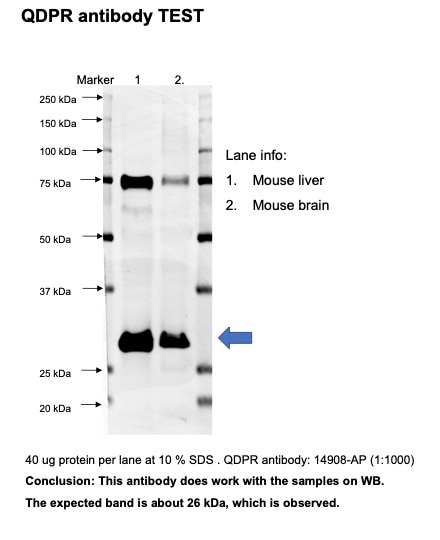 |
